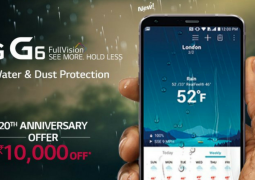6 Best Practices For Your E-commerce Business That Will Improve Your Customer’s Online Shopping Experience
by April 22, 2015 1,558 views0
When a customer visits an e-commerce website a world of opportunities open up for online business owners. There is no question that making a sale should be every e-commerce brand’s priority, but there are a number of build-ups to that sale that many e-commerce brands haven’t implemented successfully.
For a brand, a build-up to a sale is the business equivalent of a heavyweight championship bout between two boxers. The difference being that this business build-up happens all the time. Let’s take a look at 6 best practices that can help your e-commerce brand build-up to a spectacular sale, every day of the year.
Get rid of pre-checkout registration process
When customers are looking to make a purchase their priorities include finding the right product and completing their transaction. What is not part of their priority list at that point in time is creating an account on your website. If you force customers to create an account before they can complete the transaction process, you stand the risk of irking your customers.
You must ensure that customers are able to complete their transactions without having to go through the hassles of registration and account creation. You can always give your customers the option of creating an account once the transaction is complete. Ease of use is the keyphrase here.
Use Social to validate yourself
Let’s face it, we are in the year 2015 and e-commerce is not really a hidden mystery to customers. E-commerce is a mammoth industry all its own and that means there is a plethora of e-commerce marketplaces for customers to choose from. However, more options doesn’t necessarily translate into better options and customers are vary of the authenticity of new e-commerce websites.
Whilst customers do show trust in some of the bigger names in this industry, trusting a new e-commerce platform is not always an easy decision for a customer. This is where social validation comes in. You must include testimonial, reviews, or any press coverage of your business on your e-commerce website itself. This helps reduce customer apprehension. Trust is the keyword here and you can’t ask your customer to trust you, instead you have to give them reasons to trust you.
Create Individual product pages and write original product descriptions
Each product on your e-commerce website should have its own individual product page. Do not club multiple products into a single page because customers want to see what they want to buy. Also, the average attention span of humans isn’t something to be proud of.
Never include a manufacturer’s product description. Product descriptions need to be informative and the content describing the product must be original. This allows you to stand out from the crowd of e-commerce brands which have listed the same product on their websites. Original content is always more engaging than something that has been read time and time again. Engagement is the keyword here.
Create a “best-selling products” section
A best-selling products section will help your customers make better buying decisions. Products listed under the best-selling section can potentially lead your customer to choose a better product, in terms of cost or quality. Apart from positively influencing your customers’ buying decision such a section can also serve as their “buyer’s catalogue”. Shopping is essentially a human condition, some prefer to call it a hobby, others are compulsive buyers.
Apart from customers who genuinely are in need of a product, there is a very large section of people who will buy good products if you show them good products. Visibility is the keyword here.
Use high-quality photographs
In the world of online shopping the closest thing to a real product is a photograph of the product. When customers visit an e-commerce website looking for a particular product they want to assess the product’s quality through whatever medium is made available to them on the website. While it is impossible to actually assess a product’s quality looking at a digital version of it, photographs play a key role in making the product as desirable as possible.
Until the day holograms become commonplace and making them accessible through a web browser becomes the norm, stick to using high-quality product photographs. Visual appeal is the keyphrase here.
Make the checkout page clean, simple, and unambiguous
By the time customers reach the checkout page they have already decided what they want to buy. List out the order quantity, an easy to understand item and price list, and as mentioned earlier let them carry on with the transaction process instead of forcing them to create an account.
In case the visitor is a returning customer use auto-populate to complete the essential details and allow customers to edit these details in case they want to. Also, make sure you have as many payment options available to the customer as possible. Simplicity and clarity are keywords here.






